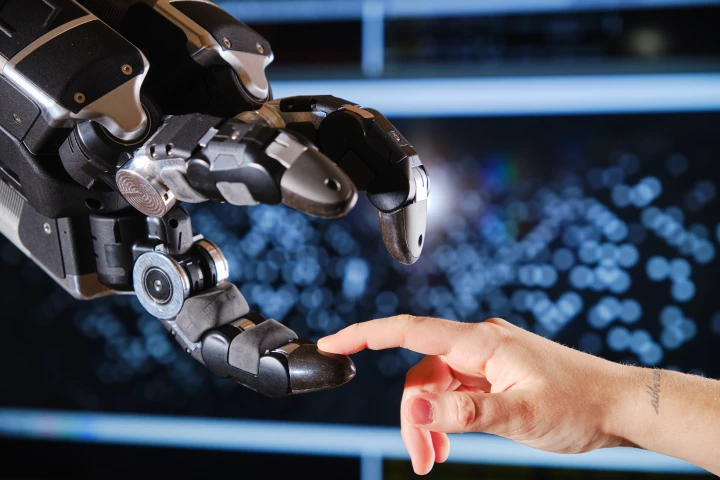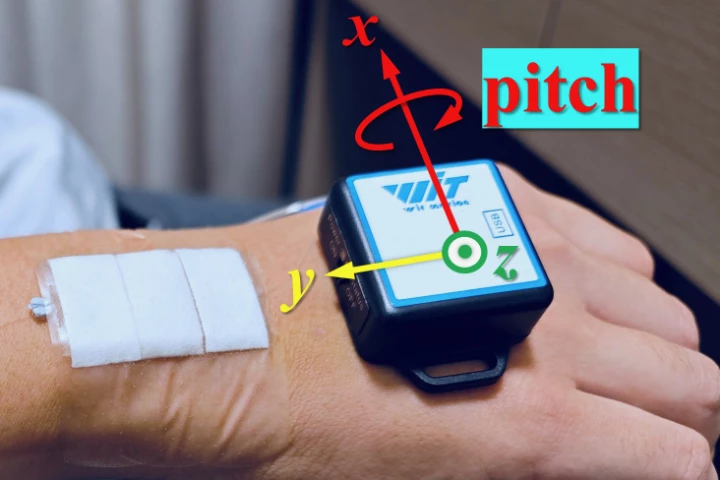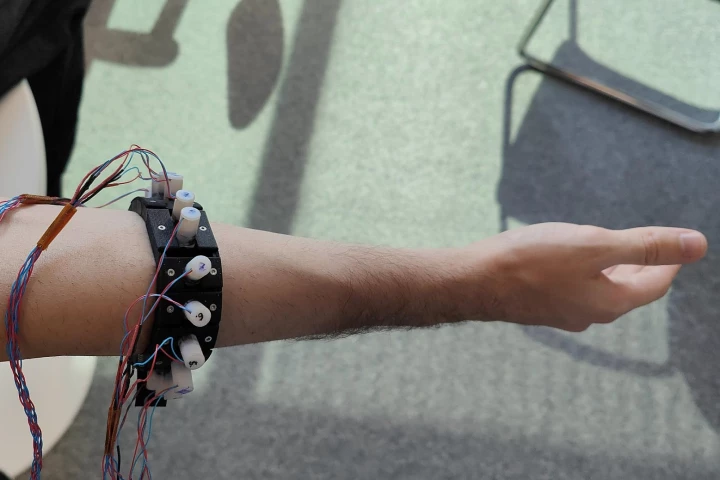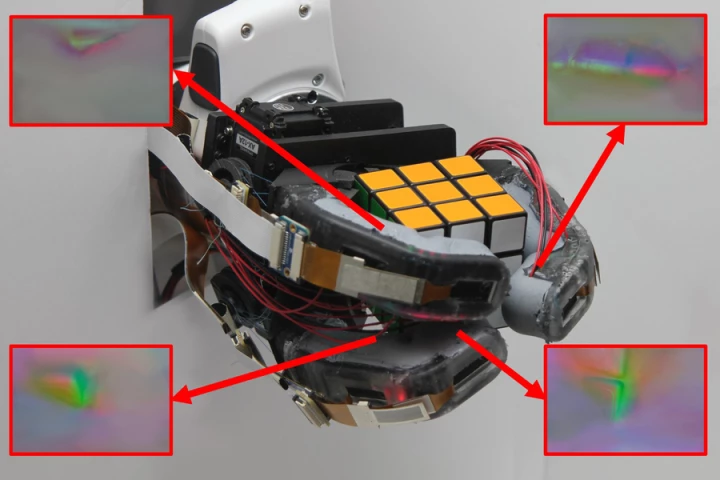Hand
-
Measuring tape is a neat material, in that it's rigid enough to hold its shape when extended, but flexible enough to give way under pressure. Scientists have taken advantage of that dual nature in a robo-gripper designed for handling fragile items.
-
When someone has been rendered tetraplegic by a spinal cord injury, they may still retain partial use of their wrists. A new device could help such folks lift cumbersome objects, by adding a robotic hand to the back of their dominant hand.
-
Sanctuary AI's Phoenix robot is very impressive, with hydraulically actuated hands that are incredibly dextrous. Well, those hands have recently become even more useful, as each one is now capable of simultaneously holding and manipulating an object.
-
While a number of groups are developing thought-controlled prosthetic hands, most of the devices require fiddly electrodes to be implanted in the amputee's body. Such is not the case with a new system, however, which works with implanted magnets.
-
Having an extra thumb on one hand may boost your manual dexterity, but wouldn't it be hard to learn to use? Not according to a new study, which found that the majority of a wide variety of people got the hang of the thing in just one minute.
-
A robotics company likely most famous for a demo of its dexterous robot hand at Amazon re:MARS with Jeff Bezos has now unveiled a new robust model designed for machine learning research, which was developed in collaboration with Google's DeepMind.
-
An experimental new wearable could allow people such as stroke victims to communicate via subtle hand movements. The device takes the form of a relatively thin patch that is temporarily adhered to the skin on the back of the wrist.
-
There are already a number of experimental prosthetic hands that provide users with the tactile sensation of touching an object. The MiniTouch system takes things further, as it allows users to sense the temperature of items that they're touching.
-
Currently, almost all powered prosthetic hands utilize electrodes that detect the user's muscle impulses and convert them into hand movements. A new system which is in development, however, should reportedly work better by utilizing ultrasound.
-
Hand edema, which is a swelling of the fingers due to the accumulation of fluid, is typically treated via a hand massage performed by a therapist. A new finger-massaging glove, however, may offer a less costly and more accessible alternative.
-
If a robot is going to be grasping delicate objects, then that bot had better know what those objects are, so it can treat them accordingly. A new robotic hand allows it to do so, by sensing the shape of the object along the length of its digits.
-
While technology is making strides in absorbing our eyes and ears in virtual worlds, it’s harder to engage senses like touch. Engineers have now developed WeTac, a thin, wearable electronic "skin" that provides tactile feedback to users in VR and AR.
Load More











